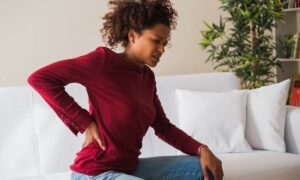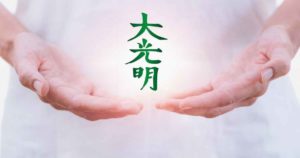Reiki symbols play a vital role in the practice of Reiki healing, as they hold the key to harnessing the power of universal life-force energy. These sacred symbols, including Cho Ku Rei (the Power Symbol), Sei Hei Ki (the Harmony Symbol), Hon Sha Ze Sho Nen (the Distance Healing Symbol), Dai Ko Myo (the Master Symbol), and Raku (the Completion Symbol), are essential to understand in order to become a master of the healing art of Reiki.
Each Reiki symbol carries its own unique meaning and purpose, and when used correctly, they can channel healing energy and promote balance in the body and mind. Reiki symbols are not inherently powerful on their own, but they serve as powerful teaching tools and enhance the intention and energy of the practitioner.
When drawing or visualizing these symbols, Reiki practitioners are able to direct healing energy and facilitate the balancing of the body’s chakras. However, it is important to note that proper understanding and usage of these symbols require formal Reiki training from a certified Reiki teacher. Through training, practitioners can fully comprehend the profound significance and potential of these symbols in the practice of Reiki.
Key Takeaways:
- Reiki symbols are integral to the practice of Reiki healing, as they allow the practitioner to tap into the universal life-force energy.
- The symbols, such as Cho Ku Rei, Sei Hei Ki, Hon Sha Ze Sho Nen, Dai Ko Myo, and Raku, each have their own meanings and purposes.
- Reiki symbols are not inherently powerful, but they enhance the intention and energy of the practitioner when correctly used.
- Formal Reiki training is necessary to fully understand and utilize the potential of these symbols.
- Practitioners can use these symbols to direct healing energy and balance the body’s chakras.
The Purpose and Meaning Behind Reiki Symbols
Each Reiki symbol holds a specific purpose and meaning, allowing practitioners to focus their intention and direct healing energy. These symbols are sacred and serve as powerful tools in the practice of Reiki healing. By understanding the purpose and meaning behind each symbol, practitioners can effectively utilize them to enhance their healing sessions and bring balance to the body and mind.
Cho Ku Rei, also known as the Power Symbol, is the first Reiki symbol we will explore. It is used to amplify the healing energy and increase its potency. The symbol is drawn or visualized to strengthen the flow of energy, making it more effective in promoting healing and restoring harmony.
The second symbol, Sei Hei Ki, represents balance and harmony. This Harmony Symbol is often used to address emotional and mental imbalances, bringing inner peace and serenity. Practitioners can incorporate this symbol in their healing sessions to promote emotional healing and create a sense of calmness.
Hon Sha Ze Sho Nen, the third Reiki symbol, is the Distance Healing Symbol. This symbol is used to send healing energy across time and space, allowing practitioners to provide remote healing to individuals who are not physically present. By activating this symbol, practitioners can bridge the gap between themselves and the recipient, facilitating healing on a spiritual and energetic level.
| Symbol | Meaning |
|---|---|
| Cho Ku Rei | Amplify healing energy |
| Sei Hei Ki | Restore balance and harmony |
| Hon Sha Ze Sho Nen | Enable distance healing |
The fourth symbol we will discuss is Dai Ko Myo, also known as the Master Symbol. This symbol represents spiritual transformation and enlightenment. It is used to connect with the highest source of healing energy and activate the practitioner’s spiritual potential. By working with this symbol, practitioners can deepen their connection to the universal life-force energy and enhance their healing abilities.
The final Reiki symbol, Raku, serves as the Completion Symbol. It is used to seal the energy after a Reiki session, ensuring that the healing energy remains integrated within the recipient. This symbol is particularly useful in bringing closure to the healing process and grounding the energy in the present moment.
“Reiki symbols are not magical charms, but rather powerful tools that assist the practitioner in focusing their intention and directing healing energy.”
Incorporating Reiki Symbols in Practice
When working with Reiki symbols, practitioners can draw or visualize them during a healing session. By focusing on the symbol and intending for the healing energy to flow through it, practitioners can channel the specific qualities and energies represented by each symbol. It is important to remember that Reiki symbols are not magical charms, but rather powerful tools that assist the practitioner in focusing their intention and directing healing energy.
Mastering the interpretation and utilization of Reiki symbols requires proper training and guidance from a certified Reiki teacher. Through formal Reiki training, practitioners can learn about the history, meaning, and proper usage of each symbol. This knowledge allows them to develop a deep understanding of the symbols and integrate them seamlessly into their healing practice. By consciously working with the symbols, practitioners can unlock their full potential and enhance their ability to promote healing and well-being.
Understanding the purpose and meaning behind Reiki symbols is an essential aspect of mastering the art of Reiki healing. These sacred symbols serve as powerful tools for directing healing energy and promoting balance on physical, emotional, and spiritual levels. By incorporating Reiki symbols into their practice, practitioners can unlock the power within and bring profound healing and transformation to themselves and those they work with.
Cho Ku Rei: The Power Symbol
Cho Ku Rei, also known as the Power Symbol, is a fundamental Reiki symbol used to enhance the flow of healing energy and increase its potency. When drawn or visualized by a practitioner, this symbol acts as a spiritual switch that amplifies the Reiki energy, making it more focused and concentrated. It serves as a reminder to the practitioner to bring in the light and connect with the divine power.
The Power Symbol resembles a coil or a spiral, representing the infinite and boundless nature of the universal life-force energy. It can be used in various ways, such as drawing it with the intention of bringing healing energy to a specific area of the body or visualizing it while performing hands-on healing. The symbol can also be placed on objects, such as crystals or water, to infuse them with Reiki energy.
By incorporating the Power Symbol into Reiki practice, practitioners can strengthen the effectiveness of their healing sessions. It is important to remember that the symbol itself does not possess any inherent power, but rather serves as a tool to focus the practitioner’s intention and enhance the flow of healing energy. To fully utilize the Power Symbol and other Reiki symbols, it is recommended to receive formal training from a certified Reiki teacher.
| Key points about Cho Ku Rei: | Meaning: |
|---|---|
| Enhances the flow of healing energy | The Power Symbol |
| Amplifies the potency of Reiki energy | Represents infinite and boundless energy |
| Can be drawn or visualized | Used to focus the practitioner’s intention |
| Can be placed on objects to infuse them with Reiki energy | Requires formal training to utilize effectively |
Sei Hei Ki: The Harmony Symbol
Sei Hei Ki, the Harmony Symbol, is a powerful tool that aids in releasing emotional blockages and restoring balance to the mind, body, and spirit. Its name translates to “God and Humanity Become One” and represents the harmonization of opposing energies within oneself. When used in Reiki practice, Sei Hei Ki can help heal deep emotional wounds and promote inner peace.
This symbol is often depicted as an intricate design that resembles the shape of a key. It is believed to unlock the door to emotional healing and provide a pathway to higher consciousness. Drawing or visualizing Sei Hei Ki during a Reiki session can help bring emotional balance and restore a sense of wholeness.
| Key Points about Sei Hei Ki: |
|---|
| • Symbolizes the harmonization of opposing energies |
| • Aids in releasing emotional blockages |
| • Restores balance to the mind, body, and spirit |
| • Represents the union of humanity and divinity |
| • Can be visualized or drawn to enhance healing energies |
When working with Sei Hei Ki, it is important to set the intention for emotional healing and allow the energy to flow freely. By incorporating this symbol into the Reiki practice, practitioners can facilitate the release of negative emotions, promote mental clarity, and restore overall well-being.
Hon Sha Ze Sho Nen: The Distance Healing Symbol
Hon Sha Ze Sho Nen, the Distance Healing Symbol, allows Reiki practitioners to send healing energy across time and space, bridging the gap between physical and spiritual realms. This powerful symbol serves as a conduit for intention and energy, enabling practitioners to connect with others who are not physically present.
When using Hon Sha Ze Sho Nen, practitioners visualize or draw the symbol while intending to send healing energy to a specific person, situation, or event. The symbol acts as an amplifier, enhancing the practitioner’s ability to direct energy and promote healing on a deep level.
One way to use Hon Sha Ze Sho Nen is through distant healing sessions. By focusing on the symbol and the intention to heal, practitioners can project Reiki energy to individuals who may be located in different parts of the world. This technique is particularly useful for those who are unable to receive in-person Reiki sessions but still seek the benefits of healing energy.
| Benefits of using Hon Sha Ze Sho Nen: |
|---|
| Allows for remote healing and energy transfer |
| Helps bridge the gap between physical and spiritual realms |
| Enhances the practitioner’s ability to direct healing energy |
| Facilitates deep healing on an energetic level |
It is important to note that while Hon Sha Ze Sho Nen is a powerful tool, it should always be used with the highest intention and for the greatest good of all involved. As with any Reiki symbol, it is essential to receive proper training from a certified Reiki teacher to fully understand and utilize its potential.
Dai Ko Myo: The Master Symbol
Dai Ko Myo, the Master Symbol, represents the highest level of spiritual consciousness and is used to awaken one’s inner light and connection to universal energy. This symbol holds immense power and is often considered the most sacred and transformative of all the Reiki symbols. With its intricate design, Dai Ko Myo acts as a catalyst for spiritual growth, enlightenment, and self-realization.
When working with Dai Ko Myo, practitioners harness its energy to bring deep healing and harmony to the body, mind, and spirit. By visualizing or drawing this symbol, Reiki practitioners can access the universal life-force energy in its purest form, allowing it to flow through their hands and into the recipient’s energy field. This influx of healing energy can help remove energetic blockages, balance chakras, and promote overall well-being.
In addition to its healing properties, Dai Ko Myo is also used for attunements, where a Reiki master initiates a student into the practice of Reiki. During this process, the symbols are imprinted into the student’s energy field, deepening their connection to Reiki and allowing them to channel its energy with greater proficiency.
| Key Features of Dai Ko Myo: | Meaning and Purpose: |
|---|---|
| Complex design: | Symbolizes the interconnectedness of all creation and the layers of consciousness. |
| Center spiraling line: | Represents the awakening of one’s inner light and spiritual evolution. |
| Four rays of light: | Symbolize healing, balance, and the connection to the four elements – earth, air, fire, and water. |
It is important to remember that Reiki symbols hold their power through intention and the energy provided by the practitioner. The symbols themselves do not possess any special abilities, but they serve as potent reminders and tools to focus and amplify healing energy.
To fully comprehend and utilize the potential of Dai Ko Myo and other Reiki symbols, it is essential to receive formal training and guidance from a certified Reiki teacher. These teachers have the knowledge and experience to lead students on a transformative journey, enabling them to master the art of Reiki and explore the limitless healing possibilities it offers.
Raku: The Completion Symbol
Raku, the Completion Symbol, signifies the completion of a Reiki session and is used to seal the energy, ensuring that the healing vibrations continue to resonate within the recipient. It is an essential symbol in the practice of Reiki, representing the final stage of the healing process.
When using Raku, practitioners visualize or draw the symbol to create a sacred space and complete the energetic exchange between the practitioner and the recipient. It acts as a closing ritual, bringing the session to a harmonious conclusion and solidifying the healing intentions.
“Raku serves as a gentle reminder to the recipient that the healing process doesn’t end at the conclusion of the session, but rather continues to work within them,” says Reiki master and teacher, Jane Smith. “The symbol acts as a bridge, connecting the recipient to the healing energy and allowing it to continue its transformative work.”
By integrating Raku into a Reiki practice, practitioners ensure that the energy released during the session remains with the recipient, continuing its healing effects long after the session ends. It represents the importance of closure and the ongoing nature of the healing process.
| Key Points: | Reiki Symbols for Healing | Using Reiki Symbols in Practice |
|---|---|---|
| Symbol: | ✦ Raku (The Completion Symbol) | |
| Purpose: | Sealing the energy and completing the Reiki session | |
| Visualization: | Visualize or draw the symbol to create a sacred space and solidify the energetic exchange | |
| Role: | Acts as a closing ritual, connecting the recipient to the healing energy and allowing it to continue its transformative work | |
Incorporating Reiki Symbols in Practice
Incorporating Reiki symbols into your practice allows you to tap into their transformative energy and unlock their full potential for healing. These sacred symbols act as gateways that connect you to the universal life-force energy, enhancing your ability to channel healing energy to yourself or others. By understanding and mastering these symbols, you can deepen your Reiki practice and achieve more profound results.
One way to incorporate Reiki symbols into your practice is through visualization. Before beginning a healing session, take a moment to visualize the symbol or symbols that resonate with your intention. Close your eyes, breathe deeply, and imagine the symbol glowing brightly in your mind’s eye. See it expanding and radiating its energy throughout your entire being, filling you with light and healing vibrations. Through this visualization, you are aligning yourself with the specific energies and qualities represented by the symbol, allowing them to flow through you and into your healing work.
Another technique is to draw the symbols on your hands or on a piece of paper before starting a Reiki session. This physical act helps to anchor the energy of the symbol in your consciousness and acts as a reminder of its presence throughout the session. You can draw the symbols using your finger or a pen, focusing on each stroke and infusing it with your intention. As you draw the symbols, visualize them coming to life and radiating their healing energy.
Table: Reiki Symbols and their Meanings
| Symbol | Meaning |
|---|---|
| Cho Ku Rei (Power Symbol) | Amplifies healing energy, protection, and grounding |
| Sei Hei Ki (Harmony Symbol) | Brings emotional balance, releases blockages, and promotes inner harmony |
| Hon Sha Ze Sho Nen (Distance Healing Symbol) | Connects across time and space for distant healing, releases karma |
| Dai Ko Myo (Master Symbol) | Represents spiritual enlightenment, healing of the soul, and connecting to the divine |
| Raku (Completion Symbol) | Seals the energy after a session, brings closure, grounding, and integration |
It is important to remember that working with Reiki symbols requires proper training and attunement from a certified Reiki teacher. They will guide you in understanding the intricacies and applications of each symbol, ensuring that you use them with respect and integrity. With practice and experience, you can deepen your connection to these symbols, fine-tune your energy channeling abilities, and master the art of Reiki healing.
Conclusion
Reiki symbols are profound instruments of energy harmony, and by understanding their meanings and practicing their application with intention, you can unlock the secrets of this ancient healing art. These sacred symbols, including Cho Ku Rei (the Power Symbol), Sei Hei Ki (the Harmony Symbol), Hon Sha Ze Sho Nen (the Distance Healing Symbol), Dai Ko Myo (the Master Symbol), and Raku (the Completion Symbol), hold significant importance in the practice of Reiki healing.
Each symbol carries its own unique purpose and can be used individually or in combination to achieve different healing goals. When drawn or visualized by a Reiki practitioner, these symbols serve as a conduit for directing universal life-force energy and facilitating chakra balancing. They enhance the intention and energy of the practitioner, while also acting as teaching tools.
However, it is crucial to receive formal Reiki training from a certified Reiki teacher to fully understand and utilize these symbols. While the symbols themselves do not possess special power, they provide a framework for focusing and amplifying the healing energy. Through proper training and practice, you can harness the full potential of Reiki symbols and incorporate them seamlessly into your healing sessions.
Unlocking the secrets of Reiki symbols allows you to tap into the ancient wisdom and power of this healing modality. By working with these symbols mindfully and with reverence, you can bring balance, harmony, and healing to yourself and others, deepening your connection to the universal life force energy that flows through us all.



